Proster articles - sources of professional knowledge
Industry knowledge compiled by specialists for specialists. Benefit from the experience of our experts.
Get to know our
business partners!
#gettoknowourpartners
We start the month of March with our partner Signify. On this occasion, we invite you to an interview with Robert Rzepiński - Partner Manager dedicated to Signify. Enjoy reading 😉

Q: In your opinion, what were the most interesting trends, events, ups or downs, in the Polish lighting market recently?
A: The pandemic has forced remote work in lighting companies. Companies whose order handling/processing processes were automated and were already using digital communication platforms did better in the market. The situation has also led to increased demand for air and surface disinfection systems, which has resulted in a significant increase in production at manufacturers that have been producing radiant heaters and UV-C disinfection equipment for years, and has encouraged new companies that have prepared their own offerings in this area. The collapse of the supply chain from the Far East has caused problems for both importers of finished equipment and component shortages at manufacturers. The opening of Signify’s new fourth production facility in Piła can be mentioned as an interesting event.
Q: What are the main factors that you think will determine the success of a Polish lighting company today and in the coming years? For example, is it enough to operate in the domestic market, or is the expansion to foreign markets necessary?
A: It’s difficult to define it clearly. It will be very important to respond appropriately to rising costs on the one hand, and on the other hand to emerging opportunities provided by the changing market and constantly developing technologies, not only in the lighting industry. Depending on the company’s profile and size, it is reasonable to assume that for smaller companies, specialisation will be the deciding factor, while for large companies, the speed with which innovations can be implemented on a massive scale.
Q: What measures should be taken in manufacturing plants to increase their energy efficiency?
A: Many manufacturing plants are still in the process of transitioning to LED technology giving savings of 50-60% with a 1:1 replacement of luminaires thanks to the replacement of the technology with one that is more modern. Particular attention should be paid to the possibilities offered by control systems that allow to increase the efficiency, durability and energy efficiency of lighting by another several dozen percent, depending on the amount of natural light inside. Certainly, the technological potential inherent in InterAct’s cloud-based lighting management systems should be exploited through their integration into Industry 4.0. This will not only save energy, but also allow the implementation of new solutions using lighting infrastructure to, for example, locate components/products in the warehouse space, etc. It is also important to keep in mind outdoor lighting, which is practically in every manufacturing plant and is often overlooked in upgrades.
Q: What are the trends in this area in terms of technologies, products and solutions to achieve maximum energy efficiency improvements?
A: The development of technology in lighting is perfectly in line with global trends and the resulting climate initiatives, such as the European Green Deal.
Signify’s Green Switch program, developed through Signify’s extensive and comprehensive deployment of LED lighting and Internet of Things (IoT) features in an integrated lighting infrastructure, offers tremendous opportunities for energy savings of up to 80% when retrofitting existing lighting installations. A very important element of this programme is to increase the share of natural energy sources in solar power systems integrated with street lighting, and to eliminate waste and reduce operating costs through closed-loop economy solutions, e.g. by investing and in the development and promotion of 3D printing technology.
The programme responds to the growing need to produce food in an energy-efficient and rational manner by introducing LED lighting systems to vertical farms located in urban areas.
Q: What intelligent solutions will work in the office? After all, it is a place using up a lot of electricity.
A: Intelligent LED systems and the currently available InterAct platform based on cloud technology for collecting and managing data extracted from the lighting system allows to optimise energy consumption, reduce operating costs, manage office space more efficiently, while providing high comfort to users and the possibility to integrate with other systems in the building through API.
As a complement to the currently available WiFi wireless communication radio networks, a completely new to the market Li-Fi technology for data transmission through light is entering office spaces. Signify Trulifi systems will work well wherever absolute security is required to protect transmitted data, radio frequencies are increasingly crowded, and where the use of radio waves is not possible or permitted
Comfort and health issues should not be overlooked, i.e., making the work of employees and customers as safe as possible by reducing the risk of Covid-19 and other diseases through UV-C air and surface disinfection systems.
Q: What should I look for when approaching an architect to design smart home and office systems?
A: Nowadays, we can expect much more from lighting than just energy reduction or the ability to “dim” lighting. A key element in the collaboration is to build in the minds of architects and designers a comprehensive approach to smart lighting both in home installations based on Hue technology and office installations based on the previously mentioned InterAct cloud technologies
A new standard for sustainable building is becoming the WELL Building Standard, specifically paying attention to and promoting the health and well-being of the building’s occupants. By designing lighting solutions in accordance with the proven principles of biophilic design, we reproduce natural light in interiors both in terms of color rendering and changing its intensity and hue throughout the day. As a prime example of this type of solution is Signify’s innovative NatureConnect lighting system, which replicates natural daylight patterns indoors to create a healthier, more attractive and engaging environment.
Thank you Robert for this conversation.
